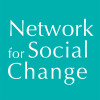The population enjoyed 10 years of democratic rule from the civil resistance of 1944 to the CIA-backed overthrow of President Arbenz in 1954. After the coup human rights and popular protest came under savage attack. The repression was highlighted by the 1992 award of the Nobel Peace Prize to Rigoberta Menchu, the indigenous woman involved in the struggles of the Peasant Union against the genocidal policies towards the indigenous Mayan people.
There was prolonged guerrilla warfare from 1962 to 1996, in which several different groups took part, and the US backed the right wing commanders of the armed forces. This bitter conflict resulted in over 200,000 deaths. It is estimated that 93 per cent of the atrocities committed were by the security forces. Since 1996 there have been multi-party elections, but the military remain powerful.

 The online version of Vol. 1 of the bibliography was made possible due to the generous support of the
The online version of Vol. 1 of the bibliography was made possible due to the generous support of the  The online version of Vol. 2 of the bibliography was made possible due to the generous support of
The online version of Vol. 2 of the bibliography was made possible due to the generous support of